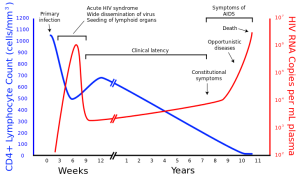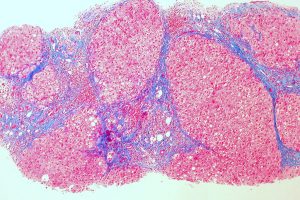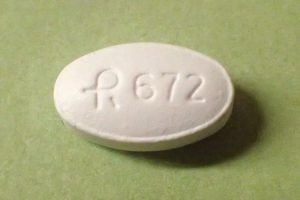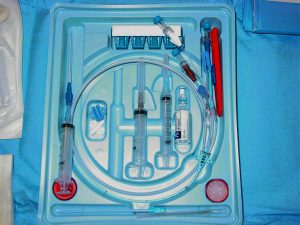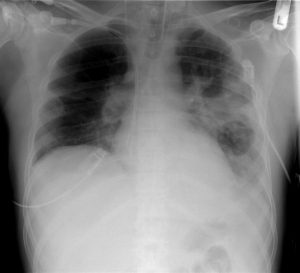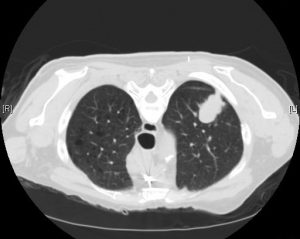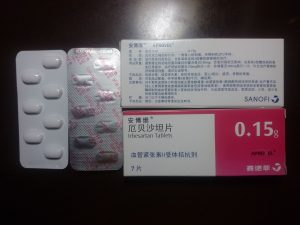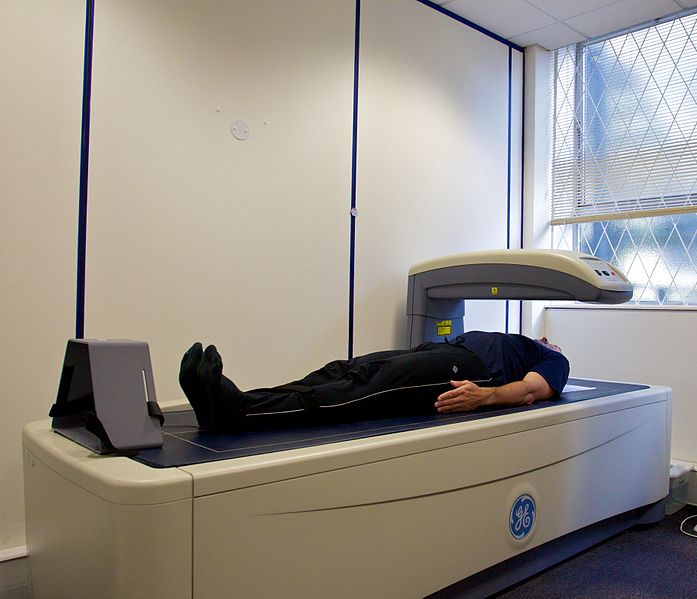“Correction of Anemia with Epoetin Alfa in Chronic Kidney Disease”
by the Investigators in the Correction of Hemoglobin and Outcomes in Renal Insufficiency (CHOIR)
N Engl J Med. 2006 Nov 16;355(20):2085-98. [free full text]
—
Anemia is a prevalent condition in CKD and ESRD. The anemia is largely attributable to the loss of erythropoietin production due to the damage of kidney parenchyma. Thus erythropoiesis-stimulating agents (ESAs) were introduced to improve this condition. Retrospective data and small interventional trials suggested that treatment to higher hemoglobin goals (such as > 12 g/dL) was associated with improved cardiovascular outcomes. However, in 1998, a prospective trial in ESRD patients on HD with a hematocrit treatment target of 42% versus 30% demonstrated a trend toward increased rates of non-fatal MI and death in the higher-target group. In an effort to clarify the hemoglobin goal in CKD patients, the 2006 CHOIR trial was designed. It was hypothesized that treatment of anemia in CKD to a target of 13.5 g/dL would lead to fewer cardiac events and reduced mortality when compared to a target of 11.3 g/dL.
The trial enrolled adults with CKD (eGFR 15-50 ml/min) and Hgb < 11.0 g/dL and notably excluded patients with active cancer. The patients were randomized to erythropoietin support regimens targeting a hemoglobin of either 13.5 g/dL or 11.3 g/dL. The primary outcome was a composite of death, MI, hospitalization for CHF, or stroke. Secondary outcomes included individual components of the primary outcome, need for renal replacement therapy, all-cause hospitalization, and various quality-of-life scores.
The study was terminated early due to an interim analysis revealing a < 5% chance that there would be a demonstrated benefit for the high-hemoglobin group by the scheduled end of the study. Results from 715 high-hemoglobin and 717 low-hemoglobin patients were analyzed. The mean change in hemoglobin was +2.5 g/dL in the high-hemoglobin group versus +1.2g/dL in the low-hemoglobin group (p < 0.001). The primary endpoint occurred in 125 of the high-hemoglobin patients (17.5%) versus 97 of the low-hemoglobin patients (13.5%) [HR 1.34, 95% CI 1.03-1.74, p = 0.03; number needed to harm = 25]. There were no significant group differences among the four components of the primary endpoint when analyzed as individual secondary outcomes, nor was there a difference in rates of renal replacement therapy. Any-cause hospitalization rates were 51.6% in the high-hemoglobin group versus 46.6% in the low-hemoglobin group (p = 0.03). Regarding quality-of-life scores, both groups demonstrated similar, statistically significant improvements from their respective baseline values.
In patients with anemia and CKD, treatment to a higher hemoglobin goal of 13.5 g/dL was associated with an increased incidence of a composite endpoint of death, MI, hospitalization for CHF, or stroke relative to a treatment goal of 11.3 g/dL. There were no differences between the two groups in hospitalization rates or progression to renal replacement therapy, and the improvement in quality of life was similar among the two treatment groups. Thus this study demonstrated no additional benefit and some harm with the higher treatment goal. The authors noted that “this study did not provide a mechanistic explanation for the poorer outcome with the use of a high target hemoglobin level.” Limitations of this trial included its non-blinded nature and relatively high patient withdrawal rates. Following this trial, the KDOQI clinical practice guidelines for the management of anemia in CKD were updated to recommend a Hgb target of 11.0-12.0 g/dL. However, this guideline was superseded by the 2012 KDIGO guidelines which, on the basis of further evidence, ultimately recommend initiating ESA therapy only in iron-replete CKD patients with Hgb < 10 g/dL with the goal of maintaining Hgb between 10 and 11.5 g/dL. Treatment should be individualized in patients with concurrent malignancy.
Further Reading/References:
1. Besarab et al. “The Effects of Normal as Compared with Low Hematocrit Values in Patients with Cardiac Disease Who Are Receiving Hemodialysis and Epoetin.” N Engl J Med. 1998 Aug 27;339(9):584-90.
2. CHOIR @ Wiki Journal Club
3. CHOIR @ 2 Minute Medicine
4. National Kidney Foundation Releases Anemia Guidelines Update (2007)
5. Pfeffer et al. “A trial of darbepoetin alfa in type 2 diabetes and chronic kidney disease.” N Engl J Med. 2009;361(21):2019.
6. KDOQI US Commentary on the 2012 KDIGO Clinical Practice Guideline for Anemia in CKD
Summary by Duncan F. Moore, MD
